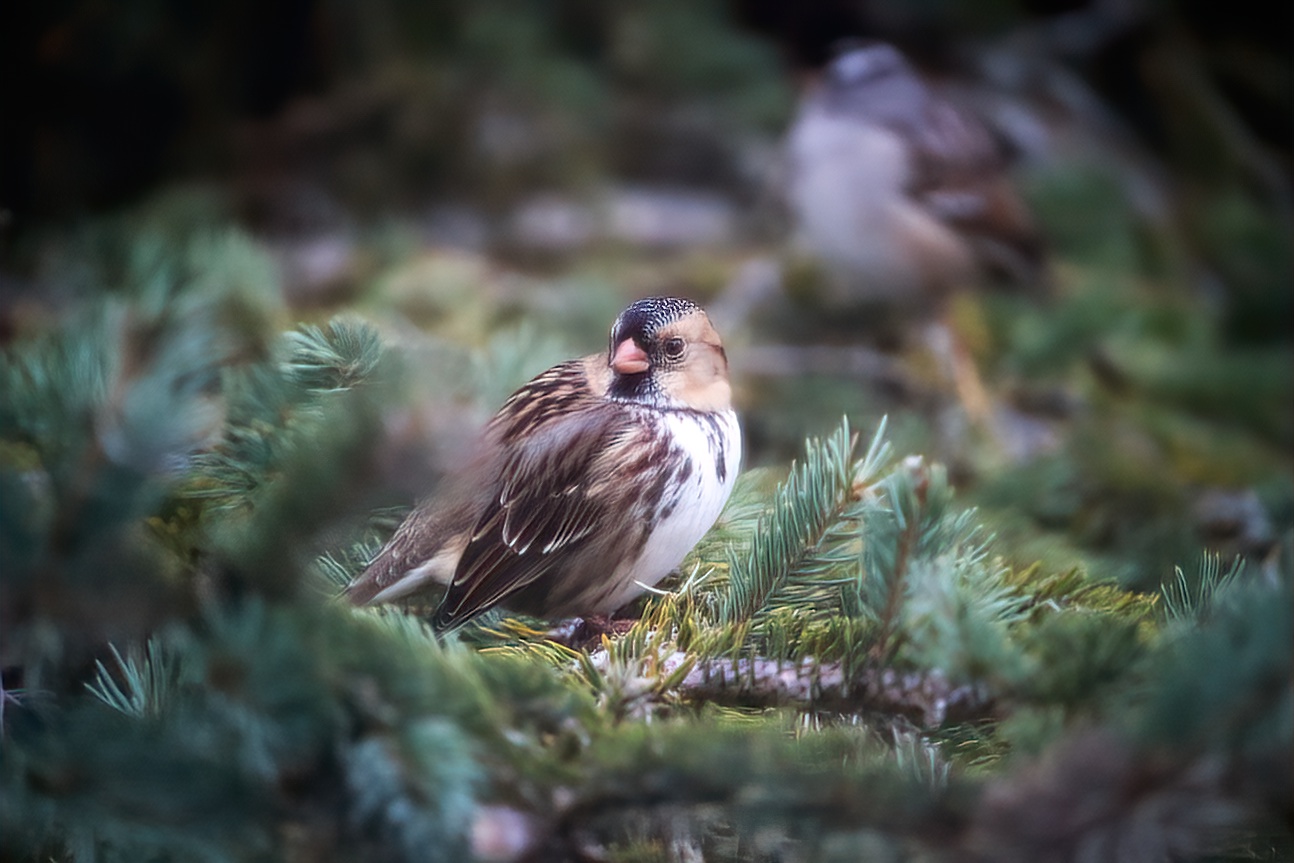Although changing climate patterns have contributed to the changing geographical ranges of birds, there are still times when the term “irruptive” applies. I certainly had an eruption of joy when an irruptive event occurred in our backyard in Cold Lake. Hitting the birding guide and finding a matching illustration, I realized Mr. Harris had sent his attractive sparrow to visit our yard.
Named after Edward Harris an amateur ornithologist in 1843, our second largest sparrow was no doubt heading north on its migration that spring day. Massive in size, at a length of 8 inches, sporting a wingspan of 11 inches and weighing up to 1.73 ounces, Harris’s sparrow had stopped in the yard, scratching the ground with its feet looking for insects and seeds. Truly this sparrow family member is a sight to appreciate. Sporting a black bib that covers the crown, face, throat and upper breast and a pink bill during mating season, this is the only songbird in the world that reproduces solely in Canada. Returning in the spring, usually in late May from central Texas, Harris’s sparrow normally flies north through Saskatchewan and Manitoba, heading to Nunavut and the Northwest Territories to their breeding grounds. Favouring stunted white and black spruce at the edge of the treeline and muskeg, families are raised in truly remote settings away from human interference. Raising one brood annually of up to five young, the female does the incubating, and both parents feed the hatch-lings. Nests are created on the ground, usually hidden under a stunted tree. Within a few weeks the young have left the nest and can indeed fly.
Socially, the pecking order of Harris’s sparrow is determined by the size of the black bib on the male. The older the sparrow, the more dominant that sparrow within the flock. Researchers tested this theory by dying the feathers of young birds black to create larger bibs. Interestingly, these younger birds rose into dominance within the hierarchy of male birds. Dominant male birds defend their territory by singing and chasing other males out of the area.
Once the work of reproduction is and raising the family is over, the call of a winter migration grows in August, with Harris’s sparrow in flight. Researchers note that Harris’s sparrow has a much broader geographic flight path southward, covering much of Alberta in this migration. Records show that Harris’s sparrow will even use mountain valleys in Banff National Park when flying south.
In reading about Harris’s sparrow, it could be argued that this sparrow “belongs” to someone else. Edward Harris, a friend of John J. Audubon, got credit for his sighting in 1843. However, history records that Thomas Nuttall, botanist and zoologist, collected the first specimen of this large sparrow in 1834, calling it the “Mourning Finch”. Like many birds, Harris’s sparrow is a threatened species, due to changes in habitat and climate. Personally I haven’t seen Harris’s sparrows since 2018 and long for an eruption of joy in an irruptive moment. Even if you should be Mr. Nuttall, I’d be happy to see you, Mr. Harris.
Crows Feet Birding with Don & Elaine

Mr. Harris, Is That You?
In response to Canada's Online News Act and Meta (Facebook and Instagram) removing access to Canada's local news from their platforms, Anchor Media Inc encourages you to get your news directly from your trusted source by bookmarking this site and downloading the Rogue Radio App. Send your news tips, story ideas, pictures, and videos to info@anchormedia.ca.






